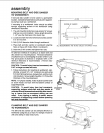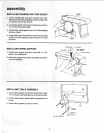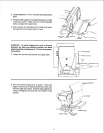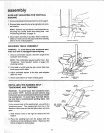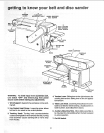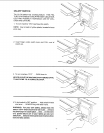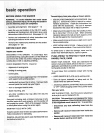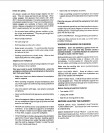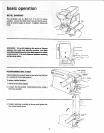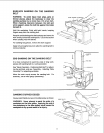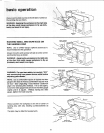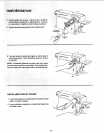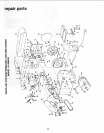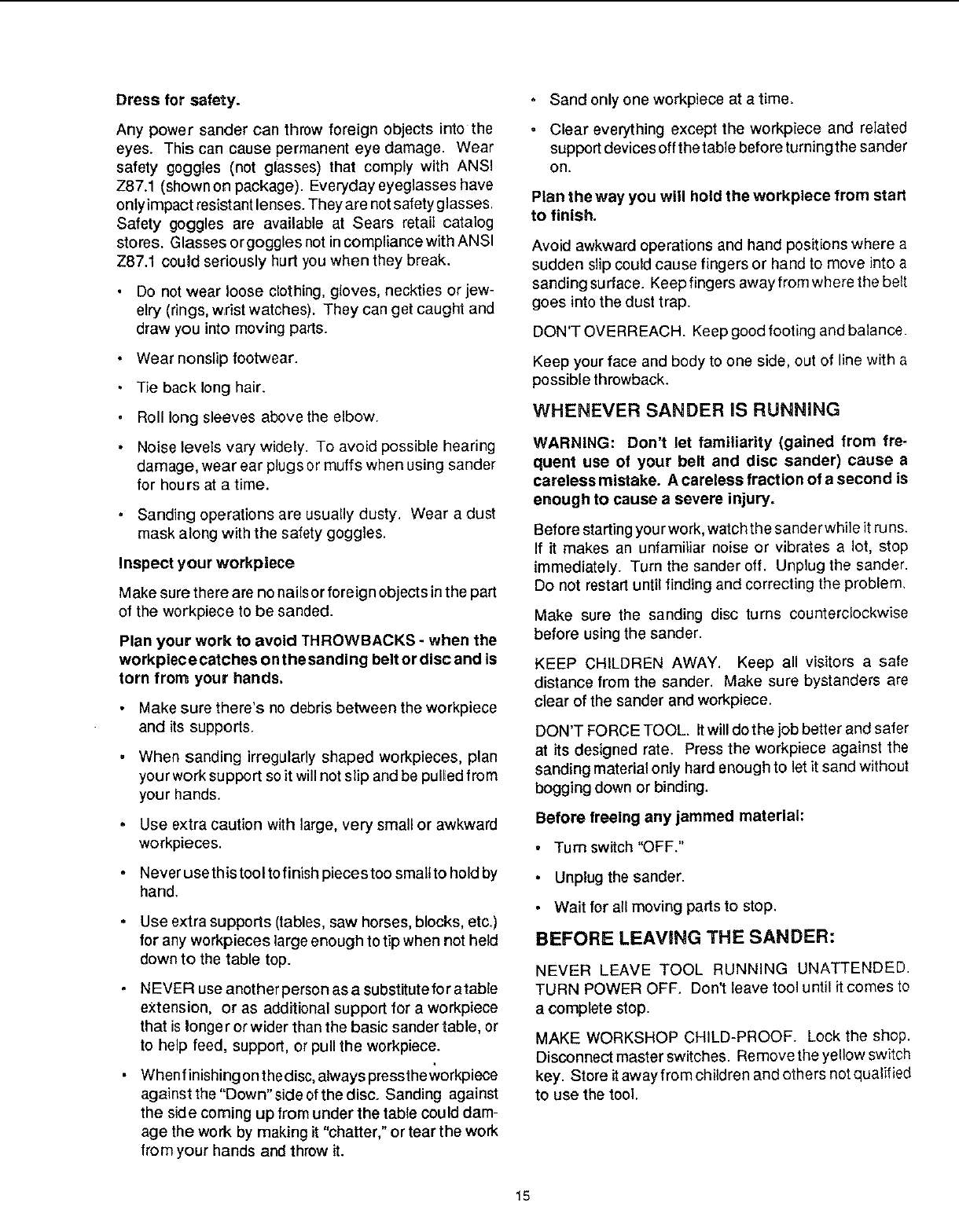
Dressfor safety,
Any power sander can throw foreign objects into the
eyes. This can cause permanent eye damage. Wear
safety goggles (not glasses) that comply with ANSI
Z87.1 (shown on package). Everyday eyeglasses have
only impact resistant lenses. They are not safety glasses.
Safety goggles are available at Sears retail catalog
stores. Glasses or goggles not in compliance with ANSI
Z87.1 could seriously hurt you when they break.
• Do not wear loose clothing, gloves, neckties or jew-
elry (rings, wrist watches). They can get caught and
draw you into moving parts.
• Wear nonslip footwear.
Tie back long hair.
Roll long sleeves above the elbow.
• Noise levels vary widely. To avoid possible hearing
damage, wear ear plugs or muffs when using sander
for hours at a time.
Sanding operations are usually dusty. Wear a dust
mask along with the safety goggles.
Inspect your workpiece
Make sure there are no nails or foreign objects in the part
of the workpiece to be sanded.
Plan your work to avoid THROWBACKS - when the
workpiece catches on the sanding belt or disc and is
torn from your hands.
Make sure there's no debris between the workpiece
and its supports.
When sanding irregularly shaped workpieces, plan
your work support so it will not sitp and be pulled from
your hands.
Use extra caution with large, very small or awkward
workpieces.
Never use this tool to finish pieces too small to hold by
hand.
Use extra supports (tables, saw horses, blocks, etc.)
for any workpieces large enough to tip when not held
down to the table top.
NEVER use another person as a substitute for atable
extension, or as additional support for a workpiece
that JsIonger or wider than the basic sander table, or
to help feed, support, or pull the workpiece.
When finishing on the disc, always pressthe workpiece
against the "Down" side of the disc. Sanding against
the side coming up from under the table could dam-
age the work by making it "chatter," or tear the work
from your hands and throw it.
Sand only one workpiece at a time.
Clear everything except the workpiece and related
support devices off the table before turning the sander
on.
Plan the way you will hold the workplece from start
to finish.
Avoid awkward operations and hand positions where a
sudden slip could cause fingers or hand to move into a
sanding sudace. Keep fingers away from where the belt
goes into the dust trap.
DON'T OVERREACH. Keep good footing and balance.
Keep your face and body to one side, out of line with a
possible throwback.
WHENEVER SANDER IS RUNNING
WARNING: Don't Jet familiarity (gained from fre-
quent use of your belt and disc sander) cause a
careless mistake. A careless fraction of a second is
enough to cause a severe injury.
Before starting you r work,watch the sanderwhi]e it runs.
If it makes an unfamiliar noise or vibrates a lot, stop
immediately. Turn the sander off. Unplug the sander.
Do not restart until finding and correcting the problem.
Make sure the sanding disc turns counterclockwise
before using the sander.
KEEP CHILDREN AWAY. Keep all visitors a safe
distance from the sander. Make sure bystanders are
clear of the sander and workpiece.
DON'T FORCE TOOL. it will do the job better and safer
at its designed rate. Press the workpiece against the
sanding material only hard enough to let it sand without
bOgging down or binding.
Before freeing any jammed material:
• Turn switch "OFF."
Unplug the sander.
• Wait for all moving parts to stop.
BEFORE LEAVING THE SANDER:
NEVER LEAVE TOOL RUNNING UNATTENDED.
TURN POWER OFF. Don't leave tool until it comes to
a complete stop.
MAKE WORKSHOP CHILD-PROOF. Lock the shop.
Disconnect master switches. Remove the yellow switch
key. Store it away from children and others net qualified
to use the tool.
15



